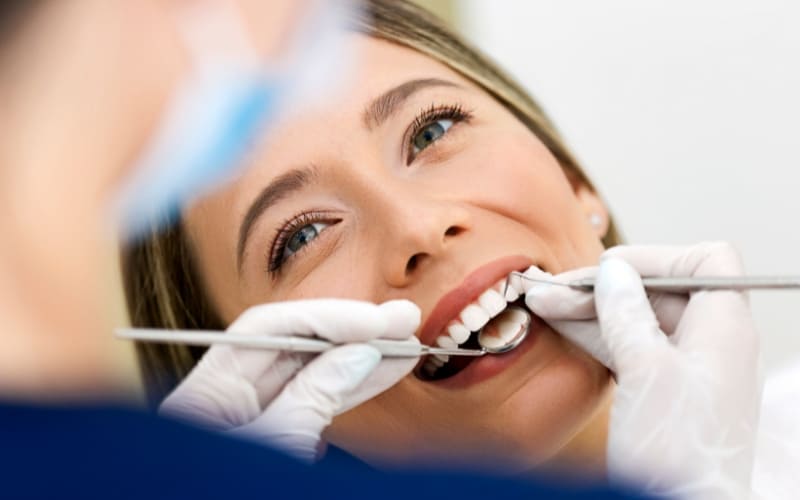
A charming grin is sometimes seen as a worldwide expression of self-assurance and well-being. Individuals now have more options for achieving the perfect smile thanks to improvements in cosmetic dentistry. Tooth bonding is a common technique that has received great praise for treating various tooth issues. In this article, we will go into dental bonding, looking at its benefits, concerns, and whether it genuinely lives up to the aspirations of people looking for a more attractive smile.
Understanding Dental Bonding:
It is a cosmetic dentistry technique in which a tooth-colored resin is applied to the teeth. After that, the material is molded, contoured, and polished to mix in with the natural teeth. The major goal of is to improve the look of teeth by correcting flaws such as chipped, discolored, or misaligned teeth.
Dental Bonding Procedure
Dental bonding is a simple, non-invasive technique that improves the look of teeth. Selecting a resin substance that matches the patient’s natural color, roughening the tooth’s surface, applying, molding, and shaping the resin to address defects, hardening it with a curing light, and refining the form are all part of the procedure.
The Benefits Of Dental Bonding:
1. Cosmetic Enhancement:
Dental bonding is a flexible treatment option for a variety of cosmetic concerns. It can cover discoloration, bridge gaps between teeth, and reshape chipped or malformed teeth. The end effect is a grin that is both harmonic and visually beautiful.
2. Non-Invasive Procedure:
Dental bonding, unlike some other cosmetic dentistry procedures, is a non-invasive technique. It usually takes just a small amount of tooth enamel to be removed, retaining the original structure of the teeth. This makes it a good choice for people who want to improve their smile in a less invasive way.
3. Quick and Convenient:
Dental bonding is well-known for its effectiveness. The entire operation is frequently finished in a single visit to the dentist, making it a handy alternative for people with demanding schedules. Because of the rapid turnaround time, patients may experience the benefits of a changed smile without enduring a lengthy treatment process.
Considerations Before Opting For Dental Bonding:
1. Durability:
While dental bonding is long-lasting, it may not be as strong as other cosmetic dentistry treatments, like porcelain veneers. Patients should be aware of behaviors such as biting hard objects or grinding their teeth since these acts might shorten the life of the bonding material.
2. Staining:
The resin used might get stained over time. While advances in discoloration resistance have been made, those who often consume staining substances such as coffee or red wine should be mindful of the possibility of color changes and may require periodic touch-ups.
3. Maintenance:
Proper oral hygiene is essential for longevity. Regular brushing, flossing, and dental check-ups are required to avoid deterioration and maintain the bonded teeth’s appearance.
The Side Effects Of Dental Bonding:
Dental bonding is a common cosmetic dental procedure that involves the application of a tooth-colored resin material to improve the appearance of teeth. While it is generally a safe and effective option, some side effects can be associated. Here are five potential side effects:
1. Sensitivity:
Some individuals may experience increased tooth sensitivity. This sensitivity can occur when the bonding material comes into contact with hot or cold substances. It is usually temporary, but patients should be aware of the possibility and discuss it with their dentist.
2. Staining:
Dental bonding materials may be prone to staining over time, especially if patients consume foods and drinks that can discolor teeth, such as coffee, tea, or red wine. Regular maintenance and avoiding certain stain-causing substances can help mitigate this issue.
3. Chipping or Breakage:
While dental bonding is durable, it may not be as resistant to wear and tear as other dental restorations like crowns or veneers. Biting on hard objects, such as ice or pens, can lead to chipping or breakage of the bonding material, requiring repairs or replacements.
4. Limited Longevity:
Dental bonding is not as long-lasting as some other cosmetic dentistry options. Over time, the bonding material may wear down or chip, requiring touch-ups or replacement. The lifespan can vary depending on oral hygiene practices and lifestyle habits.
5. Allergic Reactions:
In rare cases, individuals may experience allergic reactions to the materials used. It’s essential to inform your dentist about known allergies or sensitivities before the procedure to minimize the risk of adverse reactions.
It’s important to note that while these side effects are possible, many individuals undergo dental bonding without experiencing significant issues. Discussing your concerns and expectations with your dentist can help you decide better.
Dental bonding is a practical and effective treatment for a dazzling smile. Its adaptability, non-invasive nature, and rapid effects make it an appealing option for anyone looking for cosmetic enhancement. However, as with any dental operation, longevity, stain susceptibility, and care requirements must be considered. A trained dentist can give personalized advice and assess whether dental bonding is the best solution for getting that flawless, confident smile.
